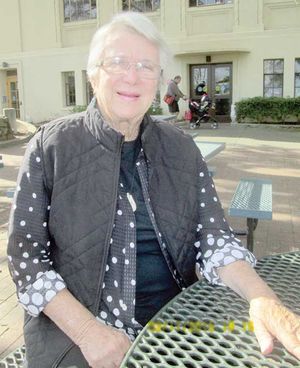Annie Sutter: Old Ferryboats of Sausalito
 Wednesday, March 25, 2015 at 06:59PM
Wednesday, March 25, 2015 at 06:59PM By Steefenie Wicks Sausalito Historical Society
In his book “Sausalito: Moments in Time,” Jack Tracy writes: “The waterfront north of Marinship became the final resting place for verteran ferryboats, once worked prodigiously, now abandoned.
Here the City of San Rafael, Vallejo, Charles Van Damme, Issaquah and City of Seattle eventually were left to their fates. Ironically, these ferry boats had never been part of Sausalito’s past but served other Bay Area cities. Nevertheless, Sausalito is where they would live out their final chapter, in Sausalito’s future.”
Waterfront writer Annie Sutter would take it upon herself to continue this line of interest in 1987 with a little jewel of a book titled “The Old Ferryboats of Sausalito.” As she states in the forward of this 37-page book, “Again. It’s not a matter of age or where they worked … it’s what happened after that matters.”
 Photo by Steefenie Wicks
Photo by Steefenie Wicks
Annie Sutter was born in Wisconsin and found her way to Sausalito working as a travel agent. In 1976 she began writing for Marin Scope in what she refers to as “the waterfront gossip column” called “On the Water.” In 1982, she interviewed movie star-turned writer Sterling Hayden for the Sausalito Historical Society. Her talks with Hayden are informative and humorous as in the following excerpt:
Hayden begins, “I set up shop in a garage, had a Chinese coffin maker set me up a little desk, and I started to write. That lasted about two weeks. I kept thinking, jeez, I’m sitting here and down there on the waterfront the girls are gathering and the music’s beginning and what am I doing in this garage? So I gave up the garage and went down to the ship. Put a surfboard across the cockpit and put my typewriter on that, and then I had the best of both worlds.” The book he was working on at that time became a best seller known as “Wanderer.”
Sutter’s keen interest in people gave an insight into the waterfront world that was so importantly part of Sausalito. It seemed only natural that she would see the destruction of the large ferryboats, the history that they represented and somehow try to preserve that part of Sausalito’s waterfront history. In her book she writes, “There are but a precious few representatives remaining of the rich maritime banquet that once rested along Sausalito’s shores. The sailing ships, square riggers, steam schooners, barges, tugs and ferryboats that over the years were beached along the waterfront are mostly gone, victims of assorted ailments: dry rot, erosion, decay, disinterest … simply the action of time.”
Her book offers a look into the history of the area, the people who at this time were in one way or the other trying to maintain some part of this waterfront heritage. She writes about the individuals who took on the enormous jobs of trying to keep these boats afloat.
She writes that one of the lucky ones is the City of Seattle, purchased by people who continued to care as the years went on. It’s not an easy task to keep alive a vessel that had almost been scrapped back in 1913. Chris Tellis, the owner of the City of Seattle, is quoted in Sutter’s book saying, “Owning a ferry is an incredible indulgence. You can’t keep it up, even if a ferry is the only thing you want to spend your money on. You are never done; it’s a full-time job just keeping even. And yet … it’s not drudgery bringing one of these boats back to life … it’s inspiring. It’s a lifestyle in itself.”
Sutter understood these feeling since she had purchased the classic 1907motor launch Cherokee, and spent many years restoring her. Resembling a small tugboat, the Cherokee became known as one gem of a small launch/yacht motoring on the waters of Richardson’s Bay.
It is no wonder that Sutter’s book would follow the enchantment and disintegration of these awesome ferries, along with the people who became part of their lives. Like Chris Tellis, artist Jean Varda, his friends Forest Wright and the Englishman Gordon Onslow-Ford purchased a ferry named Vallejo. Sutter writes that Varda first became aware of the vessel when she was docked at the Arques boat yard. The Vallejo had been sold for scrap to the Gardiner Steel Mill of Oakland, delivered to the Arques yard in Sausalito to be broken up. After Varda and his friends viewed the vessel in 1947, they hurried over to the Gardiner office in Oakland, announcing that they wanted to buy it. When asked how much money they had, Varda had none, Forest had none, but Gordon had $500.00. So it was agreed that this would be the down payment, they also agreed to pay at least $60.00 a month as rent.
Sutter’s book offers a brief history lesson of what happens when we let our maritime history disappear.
Today on the Sausalito waterfront only the City of Seattle and the Vallejo still exist. Annie Sutter’s little book is now out of print. It has become a rare volume full of Sausalito’s past, preserved by a waterfront historian.

Reader Comments